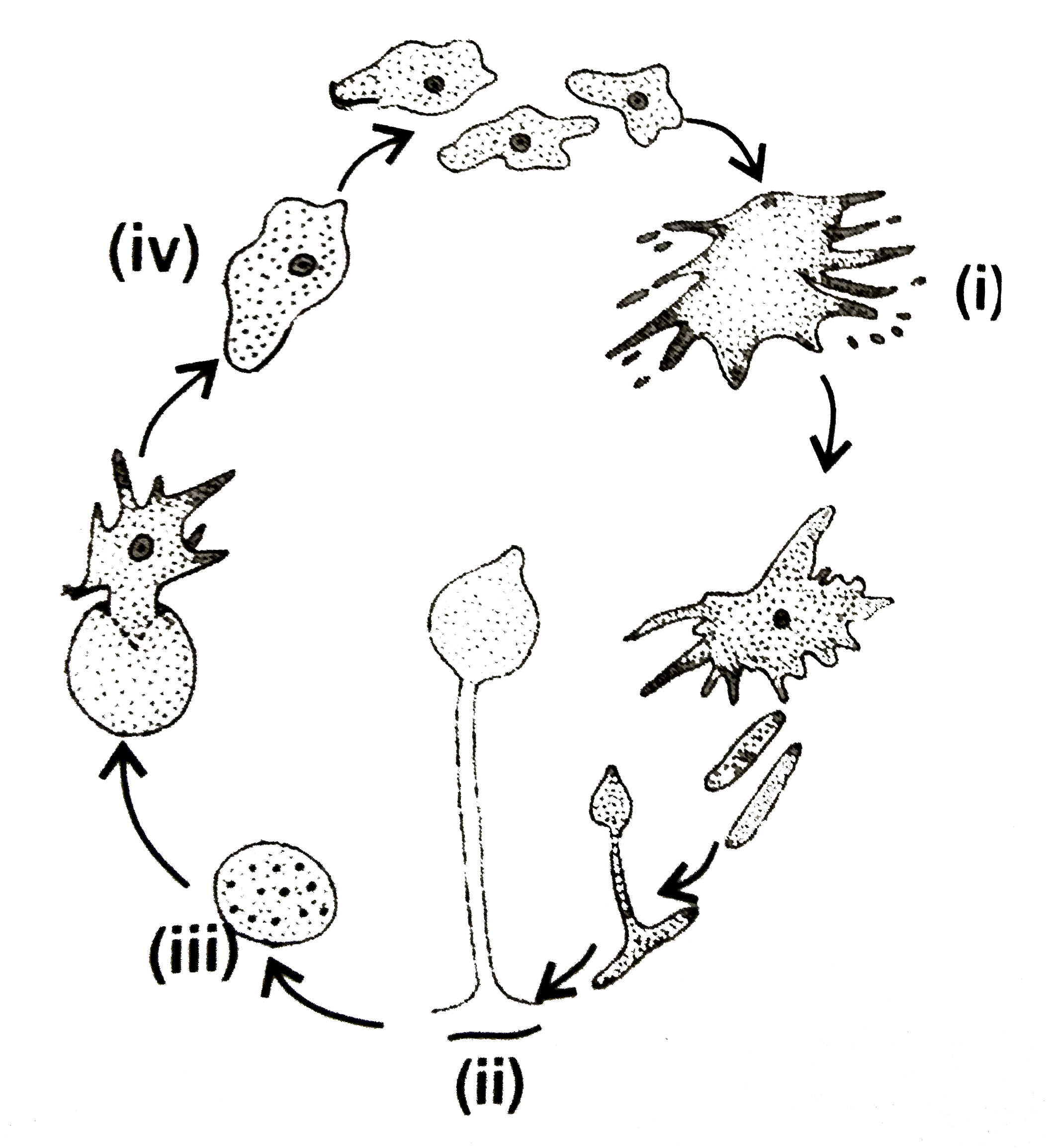(i) Aristotle classified plants into herbs , shrubs and trees on the basis of morphology.
(ii) Linnaeus two Kingdom classification was based on presence or absence of cell wall.
(iii) R.H. Whittaker include heterotrophic and chitinous cell wall organisms in animals.
Select the correct options.
a and c are correct .
b and c are correct .
b is incorrect .
c is incorrect
The correct Answer is:D
Step by step video & image solution for (i) Aristotle classified plants into herbs , shrubs and trees on the basis of morphology. (ii) Linnaeus two Kingdom classification was based on presence or absence of cell wall. (iii) R.H. Whittaker include heterotrophic and chitinous cell wall organisms in animals. Select the correct options. by Biology experts to help you in doubts & scoring excellent marks in Class 12 exams.
Updated on:21/07/2023Similar Questions
Statement-1 : Linnaeus classified plants into trees, shrubs and herbs, on the basis of morphological characters.
Statement-2 : Aristotle divided animals into group -Anaima and Enaima.
(a) Only statement-1 is correct
(b) Only statement-2 is correct
(c) Both statement-1 and statement-2 are correct
(d) Both statement-1 and statement-2 are incorrect
View Solutionread the following statements w.r.t. growth in living organisms. (a).In plants growth by cell division occurs continuously throughout their lifespan. (b) growth is a defining property of living organism. (c) cell division occurs in certain tissues to replace lost cells. (d) increase in body mass is considered as growth. (e) in majority of higher animals and plants and in unicellular organisms, growth and reproduction are mutually exclusive events. select the correct option.
View Solution
Knowledge Check
The given pie diagram represents the proportionate number of species of major taxa of plants. Select the incorrect statements regarding the achloro-
(i) A reprsents the achloro phyllous, heterotrophic, eucaryotic organisms with chitinous cell walls.
(ii) B represents the members of Kingdom Monera, e.g., bacteria and cyanobacteria.
(iii) B represents those seed plants in which seeds are enclosed inside fruits.
A and B represents gymnosperm and angiosperms respectively.
 A(i) and (iv)B(ii) and (iv)C(i) and (iii)D(ii), (iii) and (iv)
A(i) and (iv)B(ii) and (iv)C(i) and (iii)D(ii), (iii) and (iv)Read the given statements that refer to different stages of plasmolysis. Select the correct option regarding them.
(i) First stage of plasmolysis, when osmotic concentration of cell sap is just equivalent to that of external solution.
(ii) Protoplast withdraws itself from corners of hte cell wall
(iii) Protoplast gets detached from the cell wall and attains a spherical shape.A(I)(II)(III)IncipientplasmolysisLimitingPlasmolysisEvidentPlasmolysisB(I)(II)(III)LimitingplasmolysisIncipientplasmolysisplasmolysisEvidentC(I)(II)(III)LimitingplasmolysisEvidentPlasmolysisIncipientPlasmolysisD(I)(II)(III)EvidentplasmolysisIncipientPlasmolysisLimitingPlasmolysisStudy the given life cycle of cellular slime moulds and select the incorrect option.
 P. Structure (i) is formed in response to drought conditions and exhaution of food supply.
P. Structure (i) is formed in response to drought conditions and exhaution of food supply.
Q. Structure (ii) represents myxamoeba, which rounds off and is converted to a spore.
R. (iii) are uninucleate, haploid sturctures without any cell wall.
S. (iv) are uninucleate, haploid structures possessing a conspicuous xwll qLL.AP and QBR and SCP,Q and SDQ,R and S
As per Whittaker's classification, an organism possessing eukaryotic cell structure, multicellular organisation with a cell wall and nuclear membrane, showing heterotrophic nutrition can be placed under the kingdom
View SolutionSelect the correct option w.r.t criteria used by Linnaeus for classifying living organisms. (a)Contractile vacuole (b)Body organisation (c) Cell wall (d) Response to external stimuli (e) Locomotion (f) Cell type
View SolutionWhich statement (s) is/are not true for the five-kingdom classification proposed by R.H. Whittaker (1969)?
(a) The main criteria for classification include cell structure, thallus organization, mode of nutrition, reproductions, and phylogenetic relationship.
(b) All prokaryotic organisms such as bacteria, blue-green algae, and ferns are grouped together under kingdom monera.
(c) Chlamydomonas, chlorella, and spirogyra are placed in Algae within plants due to the presence of the cell wall.
(d) Fungi are placed in a separate kingdom: Kingdom fungi.
(e) Paramecium and Amoeba are placed in the animal kingdom due to lack of cell wall.
View SolutionRead the following statements and select the correct option w.r.t cell theory.
(i) All living organisms are composed of cells and products of cells.
(ii) Viruses are exception to cell theory because they are cellular particles.
(iii) All cells arise from pre-existing cells.
(iv) Activities of an organisms are the outcome of sum total of activities and interactions of its constituent cells.
(v) Rudolf Virchow gave final shape to cell theory.
View SolutionRead the following statement with 1-2 blanks in each one of them:
(i) In monocot root, a large number of vascular bundles are arranged in the form of a ______around the central _______.
(ii) Due to the presence of ______,the endodermal cells do not allow wall to wall movement of substances between cortex and pericycle, in primary dicot root.
(iii) The epidermis of stem of sunflower bears several unbranched _____hair.
(iv) The central portion of a dicot stem is usually occupied by_____comprising of thin-walled parenchymatous cells.
Select the option that correctly fills the blanks in any two of them
View Solution
